There are various problems faced by women entrepreneurs in their journey to success. These problems can range from societal stereotypes and biases to limited access to funding and resources. Despite these difficulties, women entrepreneurs continue to break barriers and make significant contributions to the business world.
Women Entrepreneurs (Women Entrepreneurship)
Women constitute about 50% of the world’s population. In traditional societies, they are confined to performing household activities. Hence women are generally called homemakers. But today, in modern society, they have moved out of the four walls of the house and are taking part in all areas of life.
Nowadays women are seen in academics, teaching, politics, administration, software development, the banking sector, hospitals, managing business enterprises, etc. Nowadays, women have the opportunity to explore the world of entrepreneurship.
It is estimated that presently woman entrepreneurs comprise about 10% of the total entrepreneurs in India. This percentage is growing every year. If prevailing trends continue, in another 5 years, women will likely comprise about 20% of the entrepreneurial force in India.
The myth that women are fit only for the making of 3 Ps (Papad, Powder, Pickle) is shattered completely today. A study by Global Entrepreneurship Monitor (GEM) which covers a wide range of 37 GEM countries has some interesting results: in 2002, the average rate of entrepreneurship among women across GEM countries was 8.9%.
This means that one in eleven women is an entrepreneur. Thailand tops the list with 18.5% of women as entrepreneurs followed by India with 14.1% of women entrepreneurs.
The Concept of Women Entrepreneurship
Generally, a women entrepreneur may be defined as a woman or group of women who initiate, organize, and run a business enterprise. The Indian Government has defined what it means to be a woman.
Entrepreneurship is when a woman owns and controls a business, and she has at least 51% of the money invested in it. She also makes sure that at least 51% of the people working in the business are women.
Kerala Government defined women industrial units as units owned/organized by women and engaged in small-scale and cottage industries with not less than 80% of the total workers as women.
With effect from 6th Feb. 1992, they gave a clear definition of what ‘Women Entrepreneurs‘ Enterprises meant. follows:
A little factory or business run by one or more women entrepreneurs who own it individually or together is called a small-scale industrial unit or industrially related services of not less than 51% as partners/shareholders/ directors of a private limited company, members of cooperative society.
According to Ruhani J. Alice, women’s entrepreneurship is all about women being involved in owning and working for a business.
Ruhani J. Alice
In short, women entrepreneurs are those women who think of a business enterprise, initiate it, organize it, operate it, and undertake risks and uncertainty involved in the business.
Women entrepreneurs constitute around 10% of the number of entrepreneurs in our country. There were 2.69 million unregistered women-owned MSMEs in India.
Women Entrepreneurship in Kerala
Kerala is a state in India that has achieved an impressive level of physical quality of life (PQL) index. This means that Kerala has lower infant mortality rates, higher life expectancy, and higher literacy rates compared to other states in the country. Kerala has the highest literacy rate among women in India.
Not only that, but Kerala also contributes significantly to the country’s production, factories, employment, fixed capital, and gross output. Even though it only accounts for a small percentage of these factors, Kerala still plays an important role in the overall development of the country.
One interesting fact about Kerala is that women outnumber men in the state. This is unique compared to other states in India. The progress made in women’s education has contributed to the state’s low population growth rate and overall social development.
Because of the emphasis on women’s education and empowerment, entrepreneurship among women in Kerala has flourished. This has led to remarkable development and opportunities for women in the state.
In conclusion, Kerala stands out as a state with a high physical quality of life, impressive social development, and a strong presence of women in various fields, including entrepreneurship.
Though the entry of women into the entrepreneurial field is a recent phenomenon in Kerala, they have been attracting the attention of policy-makers and government departments because of their excellent performance.
A couple of decades ago the number of working women was very low, but now, as the cost of living has increased, they have keenly felt the need to work outside.
it is in this context that the question of women’s entrepreneurship assumes a new significance, especially when unemployment has become a crucial problem for all. Rapid industrialization, socio-political movements, and the growth of science and technology brought significant changes.
In 1975-76, there were only 73 industrial units run by women. But then, things started to change. By 1986-87, the number increased to 1143, and within six years, it reached 4190. This shows that government agencies are starting to see women in a different light.
As of March 31, 1995, there were 126,220 small-scale industrial units registered in Kerala. Out of this, women units were only 19,361 (6.5%). In 1994-95, a bunch of awesome women entrepreneurs started up 3619 new SSI units. The largest new units were registered in Ernakulam district (1915 units) followed by Thiruvananthapuram (1758 units) while Idukki and Wayanad accounted for the lowest number of units.
As of 31-3-1995, the number of units in the hands of women entrepreneurs was 18361 units. The largest number of women entrepreneurs is in Thiruvananthapuram (2465 units).
The lowest number of women entrepreneurs is in Kasaragod District. Most of the units started by women utilize raw materials locally available.
Most of the women entrepreneurs do not have industrial know-how, though they are highly educated. Hence they hire technicians and managerial personnel.
However, generally, women in Kerala seek employment in offices or skilled jobs in the manufacturing and service sectors.
Women in Kerala, in large numbers, are skilled in traditional and self-acquired crafts like embroidery, toys, doll making, mat weaving, etc. Today they have entered every industry, from garments to hi-tech computer service and they are treated on an equal footing with men in all aspects of the industry. They started owning chemical units, engineering units, and computer service centers.
The emergence of women entrepreneurs in Kerala has been an outcome of the motivation they got from their family members to become self-employed, by availing themselves of the preferences and concessions given by the Government departments and agencies.
Before 1975, women entrepreneurs were not given much importance in the state. When the United Nations declared 1975 as the International Women’s Year, the approach to women entrepreneurs began to change.
The government announced various schemes to bring women into the mainstream of industries. Many training programs were organized, covering various aspects of modern management techniques, project implementation, etc.
The Kerala Government helps women entrepreneurs in many different ways. The assistance takes the following form:
- Grant for the purchase of machinery and equipment – 50% of the cost of machinery and equipment, subject to a maximum of 75,000.
- Grant towards the cost of building -50% of the cost of the building, subject to a maximum of 50,000.
- Rent of the building is subject to a maximum of 750 per month on a tapering basis i.e. in the first year 100%, second year 75%, third year 50%, and fourth year 25%.
- If the employment of the technical person or paid manager is approved by the General Manager of the District Industrial Centre, then the entrepreneur is eligible to get assistance towards their salary for four years on a tapering basis.
Reasons for the Slow Growth of Women Entrepreneurship in Kerala
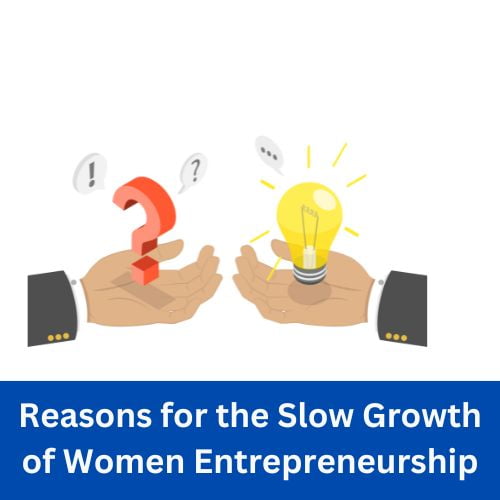
Despite the government’s efforts, the progress of women starting their businesses is very slow in the state. The reasons are outlined below:
- Unfavorable family background.
- Lack of business education.
- Dual role of women.
- Lack of aptitudes and training.
- Absence of individualistic spirit.
- Not being able to pick a job based on what you’re good at, or because of your gender, traditions, and stuff like that.
- Many women have to carry the burden of their families because their male partners are working.
- Inadequate infrastructure facilities.
- Shortage of capital and technical know-how.
- Lack of adequate transport and communication facilities.
- Shortage of power.
- Lack of security.
- Absence of ideal market conditions.
- Corruption in administration.
Challenges Or Problems Faced By Women Entrepreneurs
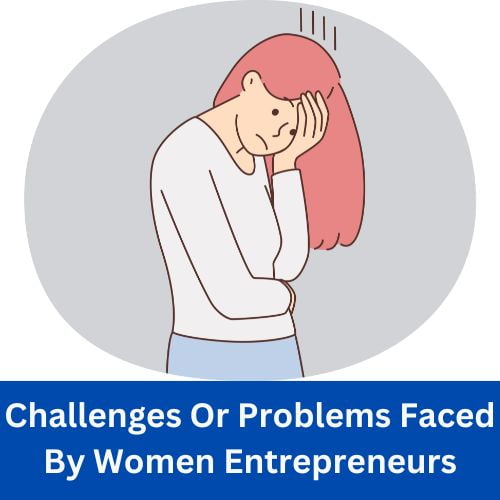
Poverty is the greatest curse of mankind. This is a black spot on the moon of human happiness. Poverty preys on women.
A woman entrepreneur faces a major challenge simply because she is a woman. She has to shoulder much responsibility in the management of the family and also the business affairs. In practice, they have been treated as Abla, the weak and dependent. In male male-dominated society, they do not get equal status with men.
Men are still favored over girls right from the moment they are born. In many religions, women have always been considered less important than men. They have to deal with unfair treatment in many ways. Women contribute more than half of a nation’s wealth. However, they are not given the same economic, social, and legal rights as men.
Further, their ‘invisible hands’ are almost unaccounted for. Women entrepreneurs face two sets of problems, namely, general problems of entrepreneurs and problems specific to women entrepreneurs. These are summarised as follows.
Shortage of finance
Women and small business owners often don’t have enough money to start or grow their businesses. They can’t get loans from banks because they don’t have anything valuable to use as collateral. Women usually don’t own property, so it’s hard for them to get financial support. Also, because some people don’t trust women to be successful in business, their family members might not want to invest in their ventures.
Even banks are not very supportive and discourage women from borrowing money, thinking they will quit their businesses after getting married. Thus women entrepreneurs rely often on personal savings and loans from family and friends.
Shortage of raw material
Women entrepreneurs find it difficult to procure material and other necessary inputs. Many raw materials cost a lot of money… The failure of women co-operatives in 1971 engaged in basket making was mainly due to inadequate availability of forest-based raw materials.
Inadequate marketing facilities
Many women business owners rely on middlemen to sell their products. They exploit the women entrepreneurs. Further, it is very difficult for women entrepreneurs to explore the market and make their products popular. For women, the market is a ‘chakravyuh’.
Keen competition
Women entrepreneurs face tough competition from male entrepreneurs and also from organized industries. They cannot afford to spend large sums on advertisements. Again, they cannot appoint selling agencies. So, they will need to work hard to survive in the market.
High cost of production
This is perhaps the most important problem a woman entrepreneur faces. The cost of making things is really expensive because the materials cost a lot, and we don’t make enough stuff to make it worth it. Even if the government helps out with money and support, it might not be enough to keep things going.
Family responsibilities
The woman entrepreneur must look after the children and family members. Management of a family may be more complicated than the management of a business. So, she can’t give all her attention to the business. The other members of the family may not be cooperative in the running of the business. The occupational backgrounds of the family and the education level of the husband have a direct impact on the development of women’s entrepreneurship.
Low mobility
One of the biggest handicaps for women entrepreneurs is their inability to travel from one place to another for business purposes. It’s unfair that people judge a woman who wants to rent a room all by herself. Sometimes, the people in charge of giving out licenses, the labor officials, and even the sales tax officials can give them a hard time. Many are the cases where women have dropped out of business due to such difficulties.
Lack of education
About 60% of women are still illiterate in India. In society, it is believed that man is the breadwinner of the family. In a male-dominated society, a woman is discouraged from learning more by the male members of the family.
There exists a belief that investing in women’s education is a liability, not an asset. Even if she is educated, she may not have a technical and business education.
Not knowing enough and not having enough experience can cause even more problems when starting and running a business.
Low capacity to bear risks
Throughout life time women lead a protected life dominated by family members. She is not economically independent. All these reduce her ability to bear the business risks. She may not have the confidence to bear the risks alone. If she is afraid of taking risks, she will never be able to become an entrepreneur.
Social attitudes
The biggest problem of a woman entrepreneur is the social attitude and the conditions in which she has to live and work. In a society where men are in charge, women don’t receive fair treatment. No matter where she goes, she experiences unfairness. People think that a girl’s abilities disappear once she gets married. She has to deal with negative reactions from her male coworkers. The male ego hinders the success of women who want to start their businesses. Therefore, strict social beliefs stop women from becoming successful entrepreneurs.
Low need for achievement
For business success, what is important is the need for achievement. Typically, girls don’t have a strong desire to achieve things. Every girl feels the painful sensation that she has to rely on others in her life. Before getting married, she relies on her parents. After getting married, she relies on her husband. And when she gets older, she relies on her sons. Her preconceived ideas about her role in life stop her from achieving things and being independent.
Lack of training
A middle-class lady who wants to start her own business in her late thirties or early forties faces a big challenge because she doesn’t have enough business training. This is true in the case of rural women entrepreneurs who are uneducated.
Lack of information
Sometimes, women who start their businesses don’t know about the latest technology and other helpful information like subsidies and discounts that they can get. They might also not know how to get loans, find places to set up their businesses, or get the materials they need.
Recent Development of Women Entrepreneurship

In India, Women Entrepreneurship is quite new. It came into prominence in the late 1970s. Due to the spread of education and favorable Government policies, more and more women are venturing as entrepreneurs. Women entrepreneurship in India has come a long way from papads and pickles to engineering and electronics.
In India, there are some women start-ups. Important are
However, the number of start-ups by women is dismal in India. As per NASSCOM’s report, there are only 9.1% of women founders compared to 91% of rt-ups founded by men.
As per the Fourth All India Census of MSME, 2006-2007, there were 15.64 registered enterprises in India. Of this, 2.15 lakh enterprises were owned by women. India has a staggering number of 2.69 million MSMEs owned by women that remain unregistered.
To lessen the problems of women entrepreneurs, Govt. of India launched a scheme, namely, Trade Related Entrepreneurship Assistance and Development (TREAD) during the 9th plan period. The scheme aims at the economic empowerment of women through trade-related training, information, and counseling extension activities related to trades, products, services, etc.
The Government of India, along with several State Governments, has implemented numerous initiatives to encourage women entrepreneurship. Several organizations have been set up to assist women entrepreneurs. Some important such organizations include
- Federation of India Women Entrepreneurs,
- Federation of Ladies Organisation,
- National Alliance of Young Entrepreneurs etc. Besides,
- Small Industries Development Organisation,
- National Small Industries Corporation,
- Industrial Development Bank of India,
- Small Industries Development Bank of India
and Several commercial banks offer various schemes (financial and non-financial) to help women. entrepreneurs. Similarly, several incubators have been established with a specific focus on supporting and encouraging women in their entrepreneurial endeavors.
IIT Gandhinagar Incubation Centre is set up to boost women start-ups with an active network of women entrepreneurs, professionals, etc. Women’s Business Incubation Programme, Thiruvananthapuram, offers business acceleration and networking services.
Ways taken for the Development of Women entrepreneurship in India
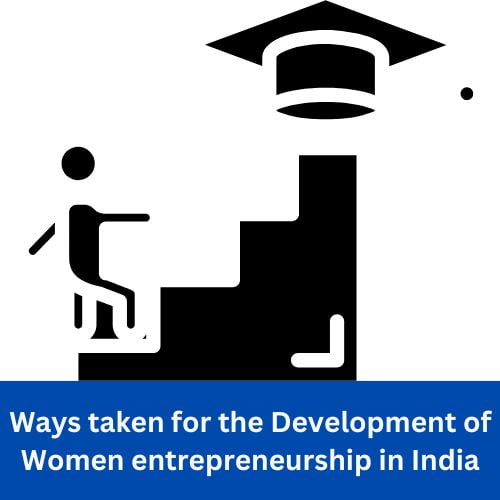
With women comprising half of the global population and contributing to about two-thirds of its working hours, it is disheartening to note that they receive only one-tenth of the world’s Less than one percent of the world’s wealth is owned by individuals with lower income and possessions.
In light of this disparity, various measures have been implemented to promote and support the development of women’s entrepreneurship in India. Women perform 11 trillion worth of unpaid or ‘invisible’ economic activity worldwide.
According to the findings of a 31-country study, women work longer hours than men; on average women put in 13% more time than men in developing countries and 6% more than men in developed countries.
Of the total burden of work, women carry 53% and men 47% in developing countries and the figures are 51% and 49% for developed economies. Very unfortunately the status of women all over the world is dismal.
The Human Development Report for 1995 pointed out that there is not a single country where women enjoy equality with men. Bhishma, the brave hero in Mahabharata, once gave Yudhishtira some advice. He said, “If a society doesn’t show respect to women, it will eventually come to an end.” It was this lack of respect towards women that caused two great wars in Hindu epics.
One, the 18-day battle in Mahabharata after Draupadi was humiliated in front of all the men. Second in Ramayana, the war in Lanka when Sita was kidnapped by Ravana.
As Swami Vivekananda said, “Just as a bird could not fly with one wing only, a nation would not march forward if the women are left behind“. A country can march forward to development only if women’s development is assured.
Swami Vivekananda
Women can become successful by focusing on their health, education, and economic activities. However, many women entrepreneurs face various challenges when it comes to achieving independence.
One way to gain economic independence is by starting their businesses or working in industries. Realizing the importance of women entrepreneurs, Govt. of India has taken measures to assist them.
The Federation of Indian Women Entrepreneurs (FIWE)
The Federation of Indian Women Entrepreneurs (FIWE) was established after the IVth International Conference of Women Entrepreneurs in December 1993, held in Hyderabad. FIWE helps women entrepreneurs in various ways:
- It offers training in export marketing, quality control, standardization, and legal formalities for running small and medium enterprises.
- It provides access to the latest technologies.
- It assists women in identifying investment opportunities.
- It organizes international exhibitions, buyer-seller meets, seminars, and symposia to expose women entrepreneurs to the regional and global business environment and opportunities.
The Federation of Ladies Organisation
(FLO) is a group for women that is part of the Indian Chamber of Commerce and Industry. It was created in 1983. FLO’s main goal is to encourage women to start their businesses and excel in their professions. FLO does this in three different ways. First, it offers programs for women with low incomes to learn about entrepreneurship. These programs teach them how to start a business and provide vocational training. Second, FLO organizes workshops and seminars for women who already have small businesses. These events teach them about computerization and financial management. Finally, FLO offers advanced programs in areas like marketing and finance for women who are at a higher level in their careers.
The Consortium of Women Entrepreneurs of India
(CWEI) was established in 2000. It gives women entrepreneurs a place to come together and learn new techniques in production, marketing, and finance. The consortium includes NGOs, voluntary organizations, Self-Help Groups, institutions, and individual businesses. CWEI focuses on activities that combine product development and training for employees. It also acts as an intermediary between Indian entrepreneurs and overseas agencies for exports.
Development of Women and Children In Rural Areas (DWCRA)
The DWCRA program was started in 1982-83 to organize women in groups and provide opportunities for self-employment on a sustainable basis. The objectives of the scheme are:
- To help rural women become their bosses by teaching them new skills and more.
- To bring together women in different groups based on their interests and help them become financially and socially independent.
- To create avenues for the production of goods and services.
- To set up programs that improve production in rural areas.
Banks
especially commercial banks have come up with many plans to help women who start their businesses. These include Rural Entrepreneurship Development Programmes and other Training programs, artisan guilds, mother units, common service centers, women’s self-help groups, promotion of rural non-farm enterprises, women’s ventures, etc. Banks also give loans to NGOs for lending to rural micro and household businesses in large amounts.
NABARD
NABARD is a really important organization that helps and supports banks when they give money to women. They also give money to banks so that they can have more resources to help women.
National Alliance of Young Entrepreneurs (NAYE)
NAYE is a top organization that helps and supports women who want to start their businesses. They created a special group called the Women’s Wing in 1975. In November of that year, they held a conference for women entrepreneurs. The Women’s Wing of NAYE helps women entrepreneurs in many ways, such as:
- Helping them get more money, resources, and customers.
- Finding good opportunities to invest their money.
- Organizing events like seminars, workshops, and training programs to help them become better business owners.
- Teaching them how to manage their businesses and be more productive.
- Solving problems by talking to the right people in charge.
- Supporting them by sponsoring trips to trade fairs, exhibitions, and special conferences.
National Policy for the Empowerment of Women, 2001
In 2001, India made a promise to empower women after attending a conference in Beijing. The Department of Women and Children created a national policy to make sure women have the same opportunities as men in every aspect of life.
Conclusion
In conclusion, the problems faced by women entrepreneurs are real and significant. However, with determination, resilience, and support from society, women entrepreneurs can overcome these challenges and thrive in their ventures. It is crucial to recognize and address these issues to create a more inclusive and supportive environment for women in entrepreneurship.




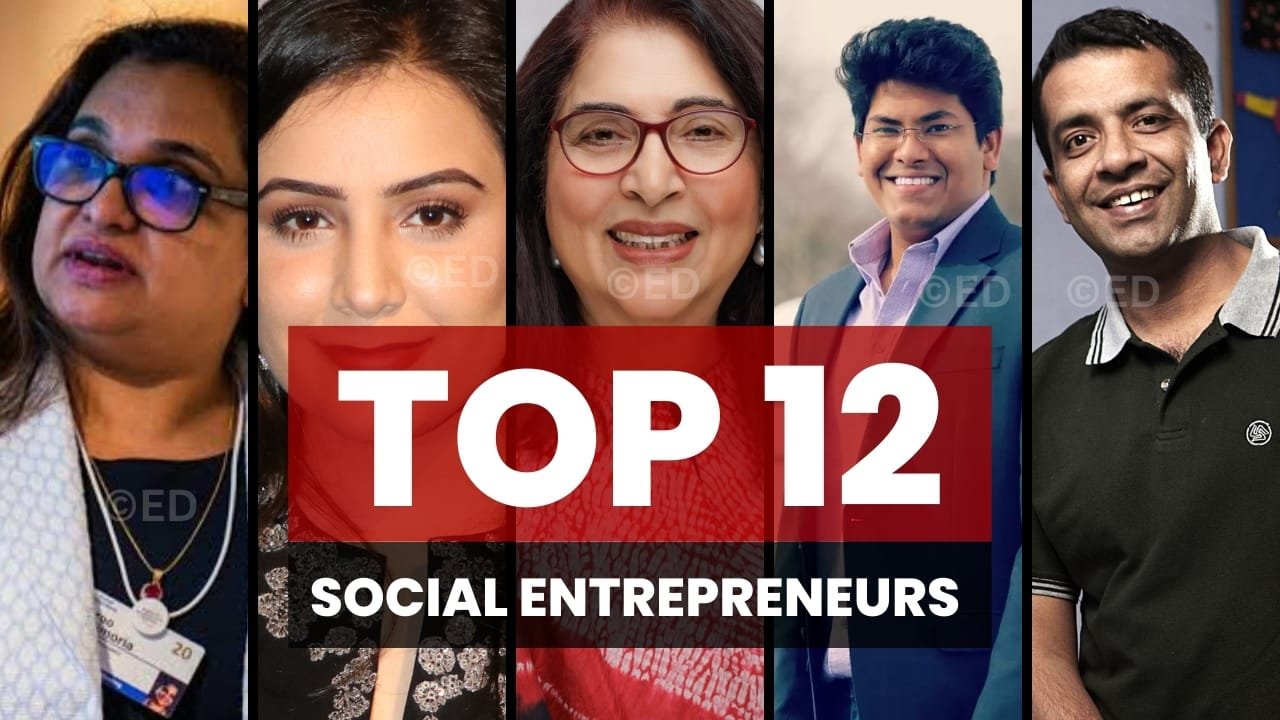
4 Reviews